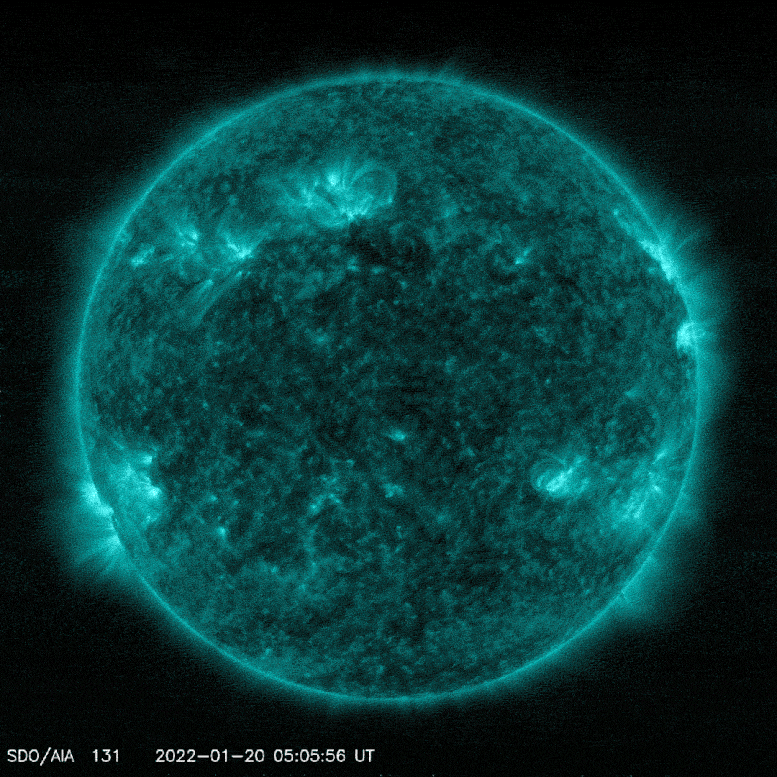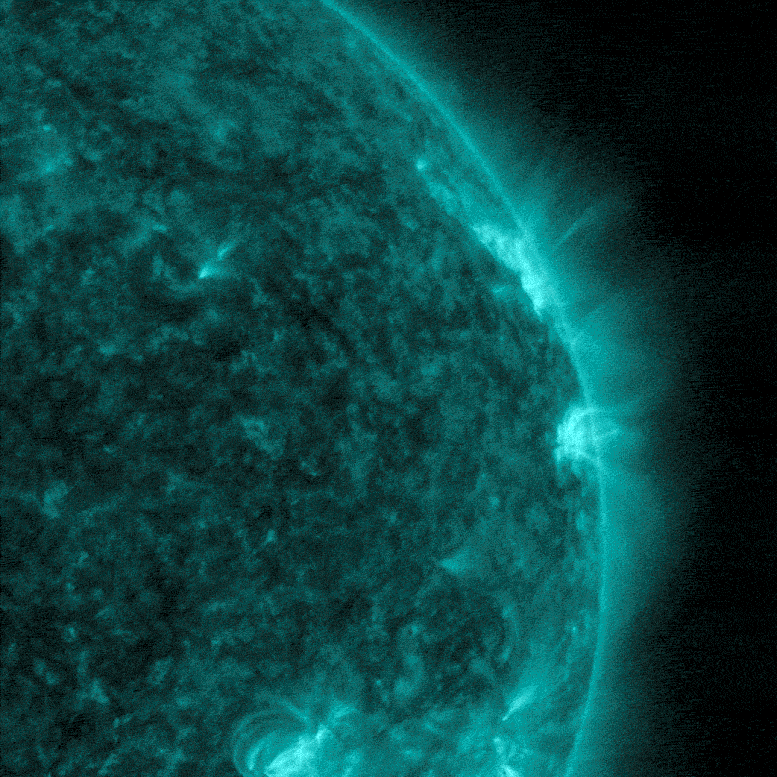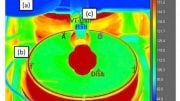
NASA’s Solar Dynamics Observatory captured this image of a solar flare – as seen in the bright flash on the right side of this image of the Sun – on January 20. The image from SDO’s Atmospheric Imaging Assembly 131 Ångström channel (colorized in teal) shows a subset of extreme ultraviolet light that highlights the extremely hot material in flares. Credit: NASA/SDO
A mid-level M5.5 solar flare was detected by NASA on January 20, 2022, which could potentially disrupt radio communications, navigation signals, and power grids.
The Sun emitted a mid-level solar flare on January 20, 2022, peaking at 1:01 a.m. EST. NASA’s Solar Dynamics Observatory, which watches the Sun constantly, captured an image of the event.
Solar flares are powerful bursts of energy. Flares and solar eruptions can impact radio communications, electric power grids, navigation signals, and pose risks to spacecraft and astronauts.
This flare is classified as a M5.5 class flare. More info on how flares are classified here.
To see how such space weather may affect Earth, please visit NOAA’s Space Weather Prediction Center, the U.S. government’s official source for space weather forecasts, watches, warnings, and alerts. NASA works as a research arm of the nation’s space weather effort. NASA observes the Sun and our space environment constantly with a fleet of spacecraft that study everything from the Sun’s activity to the solar atmosphere, and to the particles and magnetic fields in the space surrounding Earth.
NASA’s Solar Dynamics Observatory
NASA’s Solar Dynamics Observatory (SDO) is a space-based observatory launched in February 2010 as part of the Living With a Star (LWS) program. Its primary mission is to monitor the Sun in multiple wavelengths to help understand its influence on Earth and near-Earth space by studying the solar atmosphere across different layers.
SDO collects high-resolution images of the Sun in 13 different wavelengths every few seconds, providing unprecedented insights into solar activities such as solar flares and coronal mass ejections. This continuous observation is vital for improving the ability to forecast space weather events that can impact satellite operations, astronauts in space, and various communication and electrical systems on Earth.










Be the first to comment on "NASA’s Solar Dynamics Observatory Captures Mid-Level Flare Erupting From the Sun"